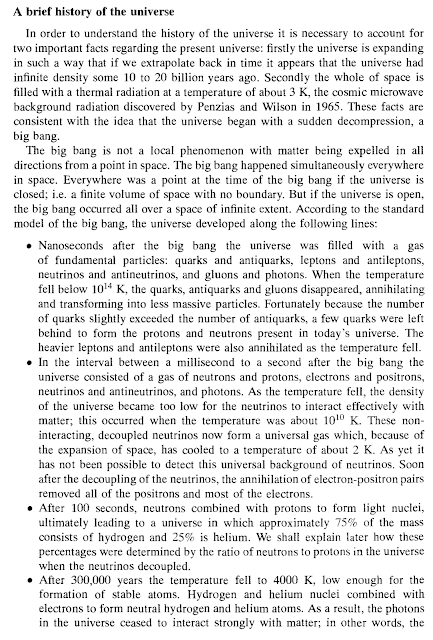Why the Big Bang Definitely Happened | Space Time | PBS Digital Studios
Δημοσιεύτηκε στις 24 Φεβ 2016
How physics lets us rewind time to the beginning of the universe.
Get your own Space Time t-shirt at http://bit.ly/1QlzoBi
Tweet at us! @pbsspacetime
Facebook: facebook.com/pbsspacetime
Email us! pbsspacetime [at] gmail [dot] com
Comment on Reddit: http://www.reddit.com/r/pbsspacetime
We
pretty much know for sure that the universe was once extremely small,
and extremely hot. And we know that something set it in motion,
expanding rapidly and continuing to do-so today. But the actual moment
of ‘the Big Bang’ is still a bit of a grey area within physics. The
theories of general relativity and quantum mechanics disagree on this
pivotal “beginning of time,” and physicists continue to search for an
all-encompassing theory to unify the study of our universe. On this
week’s Space Time, we begin to discuss the current state of the Big Bang
Theory, and where it could go from here.
FURTHER READING:
Overview of Big Bang theory
https://en.wikipedia.org/wiki/Big_Bang
Timeline of the Big Bang
https://en.wikipedia.org/wiki/Chronol...
MinutePhysics made a truly superb video on what the Big Bang really is:
https://www.youtube.com/watch?v=q3MWR...
Kurzgesagt does a great job describing some of the events of the very early universe:
https://www.youtube.com/watch?v=wNDGg...
_____________________
COMMENTS:
Brendon Binns
https://www.youtube.com/watch?v=gw-i_...
David Mulyk
https://www.youtube.com/watch?v=gw-i_...
John Proctor
https://www.youtube.com/watch?v=gw-i_...
Lawrence Proctor
https://www.youtube.com/watch?v=gw-i_...
______________________
Written and hosted by Matt O’Dowd
Made by Kornhaber Brown (www.kornhaberbrown.com)
Get your own Space Time t-shirt at http://bit.ly/1QlzoBi
Tweet at us! @pbsspacetime
Facebook: facebook.com/pbsspacetime
Email us! pbsspacetime [at] gmail [dot] com
Comment on Reddit: http://www.reddit.com/r/pbsspacetime
We
pretty much know for sure that the universe was once extremely small,
and extremely hot. And we know that something set it in motion,
expanding rapidly and continuing to do-so today. But the actual moment
of ‘the Big Bang’ is still a bit of a grey area within physics. The
theories of general relativity and quantum mechanics disagree on this
pivotal “beginning of time,” and physicists continue to search for an
all-encompassing theory to unify the study of our universe. On this
week’s Space Time, we begin to discuss the current state of the Big Bang
Theory, and where it could go from here.
FURTHER READING:
Overview of Big Bang theory
https://en.wikipedia.org/wiki/Big_Bang
Timeline of the Big Bang
https://en.wikipedia.org/wiki/Chronol...
MinutePhysics made a truly superb video on what the Big Bang really is:
https://www.youtube.com/watch?v=q3MWR...
Kurzgesagt does a great job describing some of the events of the very early universe:
https://www.youtube.com/watch?v=wNDGg...
_____________________
COMMENTS:
Brendon Binns
https://www.youtube.com/watch?v=gw-i_...
David Mulyk
https://www.youtube.com/watch?v=gw-i_...
John Proctor
https://www.youtube.com/watch?v=gw-i_...
Lawrence Proctor
https://www.youtube.com/watch?v=gw-i_...
______________________
Written and hosted by Matt O’Dowd
Made by Kornhaber Brown (www.kornhaberbrown.com)
Κατηγορία
Άδεια
- Τυπική άδεια YouTube


